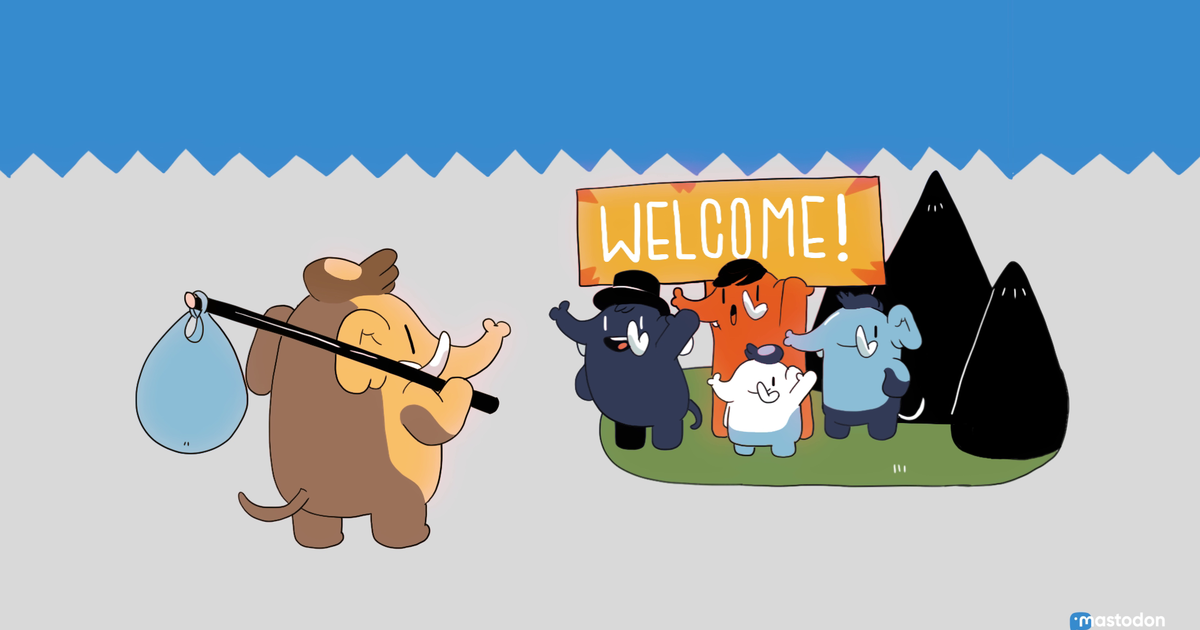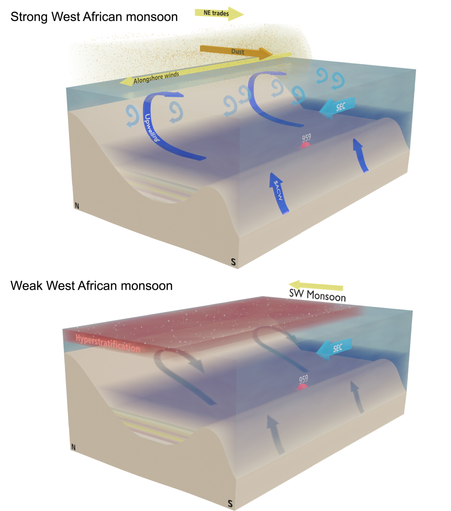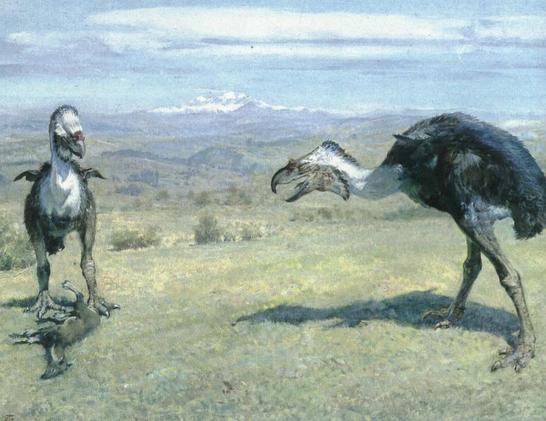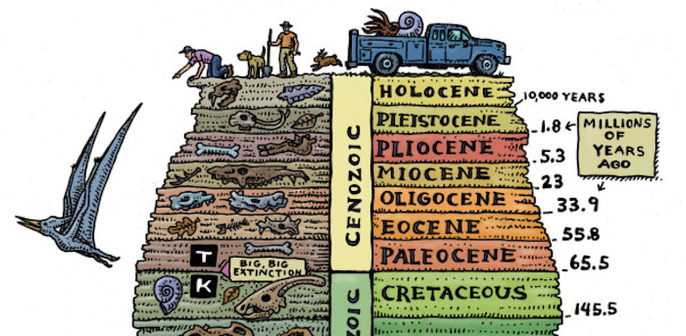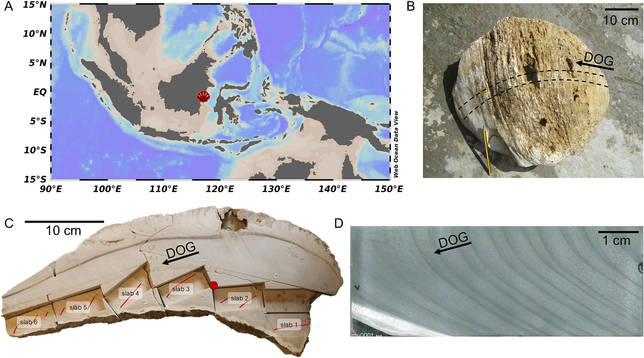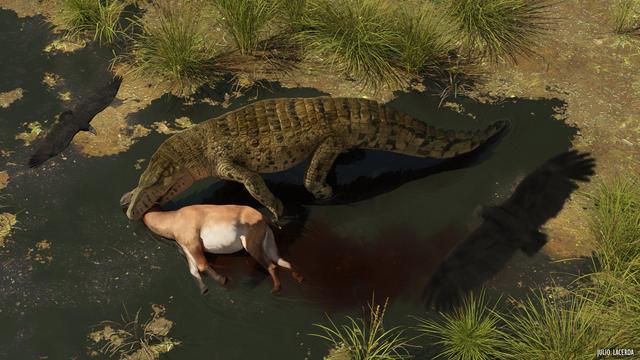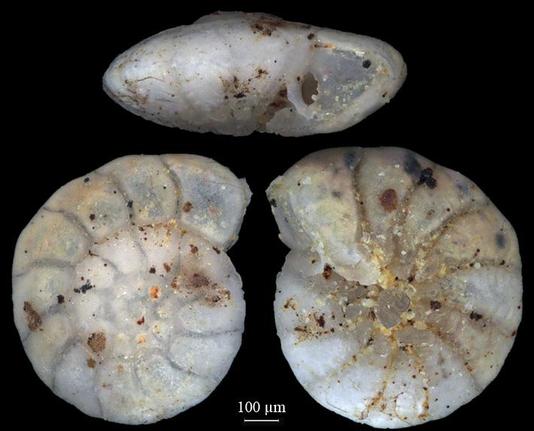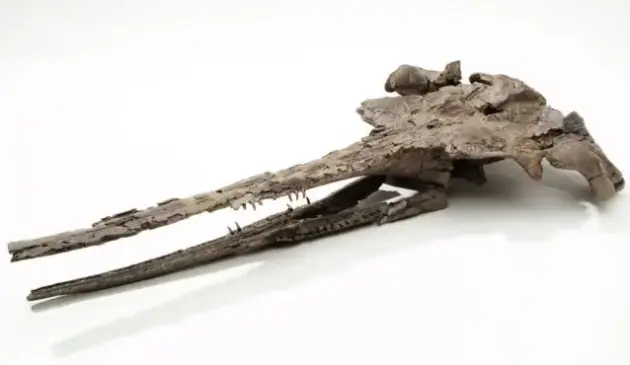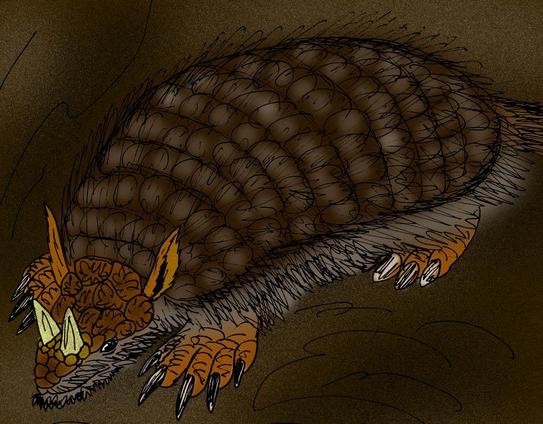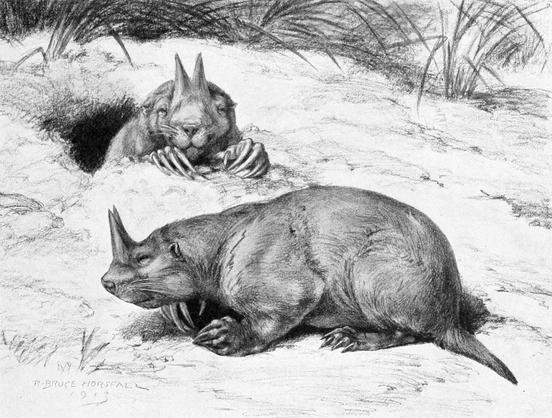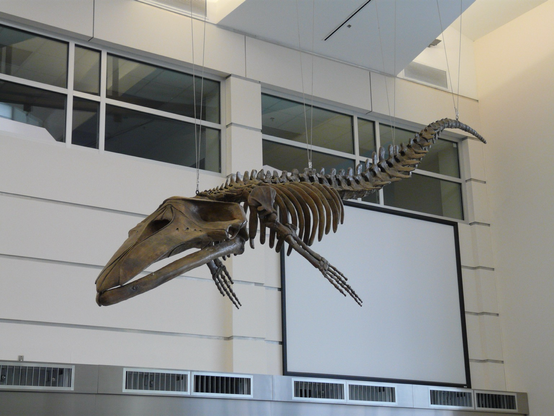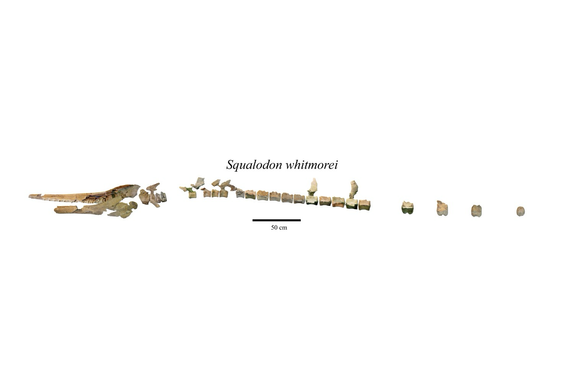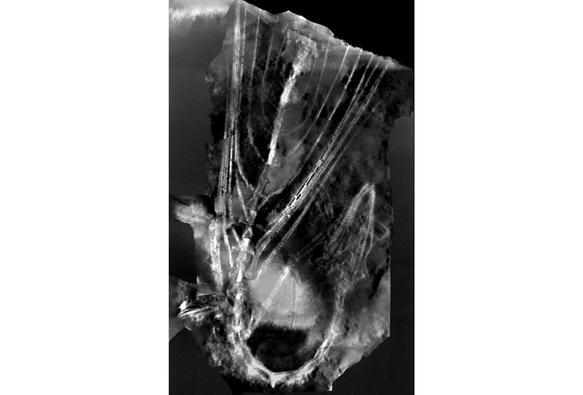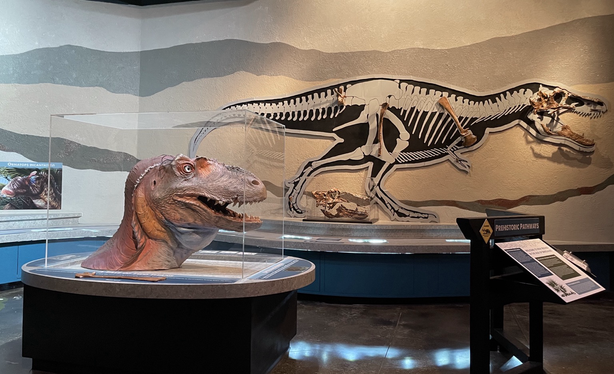#WeekendReading: Wubben et al., on warming in the tropics and intensification of monsoons during the high #temperatures of the #Miocene Climatic Optimum with a nice multi-proxy approach. Another piece to the puzzle interaction of global #warming and low latitude #climate.
https://agupubs.onlinelibrary.wiley.com/doi/10.1029/2023PA004767
#miocene
Ancient Insect Diversity Revealed in New Zealand’s Miocene Sediments, Including New Whitefly Genus https://www.byteseu.com/676438/ #Miocene #NewZealand #Whitefly
I'm highly impressed by this awesome short-term #climate #reconstruction study by Iris Arndt and colleagues, who use a #giantclam from the #Miocene to study daily (!) climate variability in this warmer period, including potential #ENSO and #extreme #weather!
https://www.sciencedirect.com/science/article/pii/S0031018224007004
This specimen of giant clam (Tridacna) lived about 10 million years ago in what is now Borneo, and there is now a record of every day of its 53 years-long life. Tracking changes in #climate and #ocenography in resolution we rarely have to the #Miocene
https://doi.org/10.1016/j.palaeo.2024.112711
Durante unos 30 millones de años, entre el Eoceno y el Mioceno, en Sudamérica, vivía el Barinasuchus arveloi, el mayor sebécido, familia perteneciente a los crocodiliformes, con unos 6 metros de longitud. Era un carnívoro temible, pesando más de tonelada y media, por lo que podía consumir cualquier tipo de presa a su alcance.
I found several shallow water foraminifera as this Ammonia in a sand from the German Pre-Alps. They prove its marine origin from the Paratethys ocean. The Paratethys covered about 18mya ago vast areas north of the Alps. #foraminifera #MarineLife #fossils #microfossils #Miocene
#WeekendReading: Ortega-Ariza et al. discuss tropical transitional carbonate systems in the #Miocene of the #Caribbean. I have issues with their interpretation, but it's an interesting take and may inform on turbid #reef dynamics.
https://www.sciencedirect.com/science/article/pii/S2468517823000072
En el Mioceno temprano, el odontoceto Romaleodelphis pollerspoecki nadó por las aguas centrales de Paratetis. Era un delfín que, a diferencia de especies contemporáneas, ya tenía un solo tipo de dientes. Además, se cree que podría oír sonidos de alta frecuencia.
El armadillo cornudo (Peltephilus) fue un mamífero herbívoro de grandes dientes triangulares que vivió en el Oligoceno (34-23 MdA) y se extinguió en el Mioceno (23-5,3 MdA). Es el otro mamífero fosorial conocido con cuernos.
#WeekendReading: Petrick et al. ( #preprint ) on how the late #Miocene #cooling related to the loss of Indo-Pacific #reefs. Seems multiple stressors combined to do the did.
https://cp.copernicus.org/preprints/cp-2024-28/
I had failed to realise that a paper I had co-written with turtle aficionados Mehdi Joseph-Ouni and Bill McCord has been published. We establish two new species in the genus Elseya, a group of Australo-Papuan side necked turtles. The fossils come from a middle Miocene site in the Northern Territory. Both species had shell lengths of about 40 cm which is pretty big for Australian side-necks.
https://www.taxonomyaustralia.org.au/ajt/papers/rmxk73t2tl
Always fun to talk #monsoons, productivity patterns, and the #Miocene Indian #Ocean. Great audience at @fu_berlin today.
So, how do you think one of the northernmost #coral #reef of its time (late #Miocene) dealt with strong #environmental oscillations? I can tell you — poorly.
We have a new paper documenting its cycles of collapse and reestablishment before its inevitable demise.
https://doi.org/10.3390/geosciences14110285
Yes, it's in an MDPI journal; no, I'm not happy about it. There were reasons I won't go into here.
Sawfly Fossil from Miocene Period Discovered in Australia https://www.byteseu.com/507740/ #Australia #Baladi #BaladiWarru #Fossil #Insect #McGrathsFlat #Miocene #NewSouthWales #Pergidae #Sawfly
Today is #NationalFossilDay! Over my career, I’ve been an author or coauthor in naming five new fossil species: the #Miocene baleen #whale Eobalaenoptera harrisoni (2004), the Miocene toothed whale Squalodon whitmorei (2005), the Triassic gliding reptile Mecistotrachelos apeoros (2007), the #Cretaceous #tyrannosaur Dynamoterror dynastes (2018), and the #Pleistocene Pacific #mastodon Mammut pacificus (2019).
#paleontology #fossil #taxonomy #scicomm @westernsciencecenter
#WeekendReading: Liu et al. on high latitude amplification in the Pacific #Ocean since the late #Miocene.

